You’re Fired! How and When To Fire a Client

On this page:
Client #1: Mr. Unrealistic
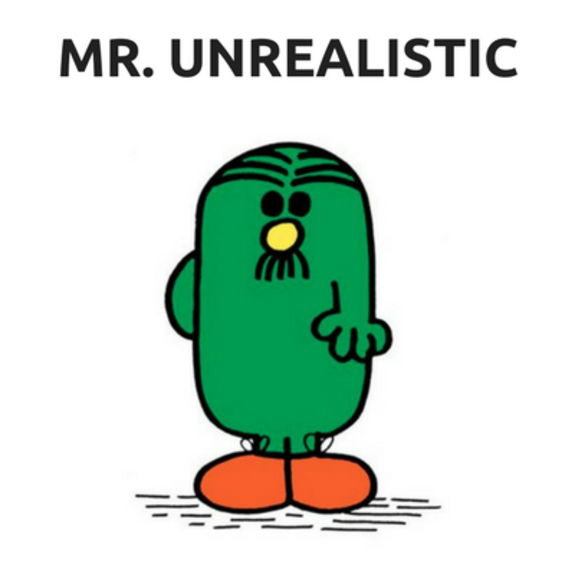
This client sees the agency-client relationship as some sort of card game where holding back your hand is the surest road to winning. He’ll demand top-shelf work in a ridiculous time frame but won’t ever tell you if he has the budget to afford it.
His favorite phrases are “can that be done today”, “why is that going to cost so much” & “I’m underwhelmed, I thought you would …”. What he really wants is for you to deliver your best-ever work at your worst-ever prices with your magic wand!
The fast-good-cheap paradigm is completely lost on him.
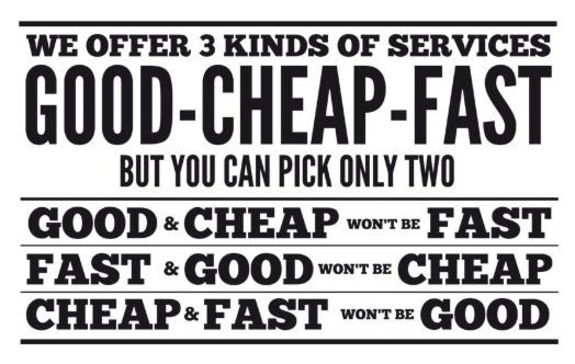
Even if this client has a big budget, the constant uncertainty coupled with unrealistic demands and lack of any indication of satisfaction may make him not worth the trouble?
How to fix this relationship
There are a few easy ways to fix this relationship:
- A clear Scope of Work: Unreasonable revisions and unexpected project changes - you can fix both these problems by clarifying your terms and conditions in your Scope of Work. Make sure that this document is as detailed as possible when you first start your project.
- Clear Commitments: Clarify client commitments at the start of the project. This will take care of clients asking for tons of revisions while dangling the carrot of a big payment.
- A well-defined Implementation Process: Often, Mr. Unreasonable’s demands spring from ignorance, not malice. A well-crafted implementation process showing exactly what is expected of the client will help educate them and stop most unreasonable demands.
- Under promise & over deliver: A client might see an “unreasonable” demand as perfectly logical because of the promises you made in your first pitch. Mitigate this problem by under promising and over delivering. If you can manage expectations, you can manage even the most difficult of clients.
Client #2: Miss Invisible
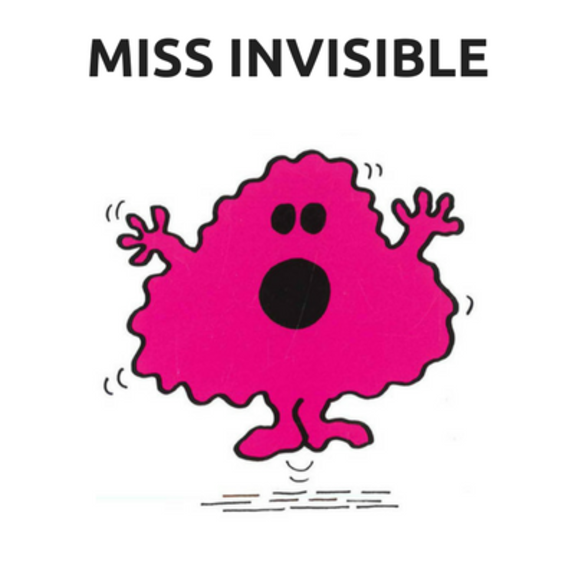
If you’re dealing with this client, be prepared to fall in love with your email tool’s automatic follow-up feature.
After the first meeting, Miss Invisible will vanish so fast that even Houdini would be impressed. You’ll frantically try to reach her over email, phone, and even her public Twitter feed, but she will hold off on decision-making as long as possible.
What she really fails to understand is that delays in approvals lead to delays in schedule, no matter how you explain it.
This would all have been fine too, except that she typically reports to a senior executive herself. If things don’t go exactly to plan, she won’t hesitate to point the finger at you (instead of the two dozen unanswered emails sitting in her inbox).
Avoid this client unless you like to write a lot of emails that start with “just following up…”
How to fix this relationship
Miss Invisible’s disappearing act is often a way to stave off responsibility. She doesn’t want to take decisions because she isn’t confident in her own position.
To fix this problem, try the following:
- Establish who ALL the stakeholders are: Find out who will be a contributor and an approver in each project and ask at what stages you should include these stakeholders in the project process/correspondence. Work to accurately determine the balance of power in case you need to escalate your unanswered correspondence.
- Clarify communication standards: Ask very clearly how the client prefers to communicate and what is their usual response time. If possible, specify what happens to the project in case of non-response beyond a reasonable time. Even suggest working in a Slack channel with ALL stakeholders so that requests and reminders are out in the open.
- Include clear terms for commitments and sign-offs: Make it clear from the very start what you expect by including specific deadlines for signing-off on deliverables (“client needs to sign-off within X days for the project to move forward”). Reiterate these deadlines when you send approvals and set follow-ups on the day of or day before the approval is due.
- Ease decision making: Make it easy for clients to take decisions by turning subjective questions (“what kind of keywords do you target?”) into objective ones (“should we target keyword X or Y?”).
- Give a reason for every decision: Give the client a reason - a because - to make decision making easier. Say, instead of asking “should we start a blog?”, ask “should we start a blog? Because one of our clients just saw a 120% increase in traffic with a blog”.
Client #3: Mr. NO
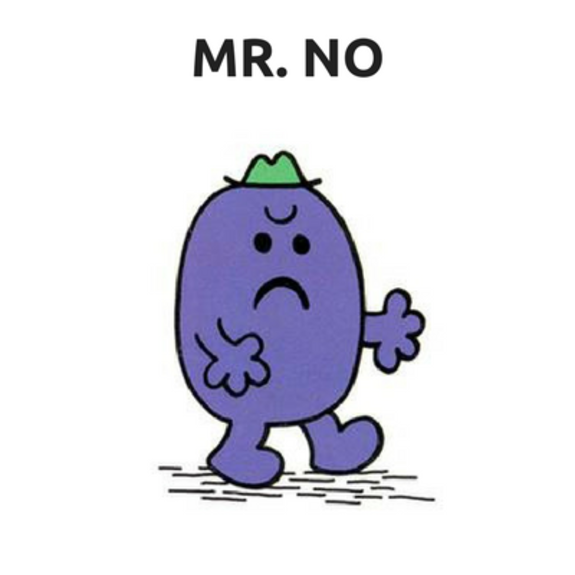
Your relationship with this client is defined by two letters: NO.
Whatever you might ask for, his one-word response is “NO” or variations thereof. Mr. No’s standard NO response is that your idea won’t work for some reason no matter what your present or evidence that you can provide - you will likely hear:
“We tried content marketing & it didn’t work for us”
“Email marketing won’t work in our industry”
“We’re not comfortable to use social that way”
“Corporate won’t approve that”
Often the NO is disguised with an ego placating “I really like that idea but ….”
A relationship with Mr. NO usually sees you and your team busting your gut to come up with great ideas & the constant NO response saps both your team's morale and your bottom line.
Generally, this relationship ends when Mr. NO’s day of reckoning comes. His management pulls him in to explain why the results of his department are so poor & his only out is to blame it on the agency & that he is currently ‘assessing’ new agencies.
How to fix this relationship
Mr. No usually does what he does because he can be a perfectionist and isn’t sure whether you can deliver to his standards (and he doesn’t want to look bad to his seniors).
Any attempt to salvage this relationship should focus on removing his objections to your proposals. Here are a few things you can do:
- Use Mr. NO’s ego: Mr. No likes to be the originator of ideas. Try brainstorming sessions and then package outcomes into proposals where you’re packaging “his” concept.
- Back suggestions with case studies: The easiest way to overcome objections is to back them up with case studies. The client might say that “social won’t work for us”, but if you can show him 5 similar businesses who saw a 200% ROI with social, he might come around.
- Focus on tangible outcomes: Mr. No doesn’t always think in abstractions like “engagement” or “traffic”. If you want to make your case, share your results in the form of real-world ROI. Something like “for every $1 we spent on social for client X, we saw a $3 worth of products sold”.
- Use a thorough Scope of Work: A strong Scope of Work will stop most objections before they even arise. You shouldn’t have to suggest halfway through a campaign that maybe you should include a blog/social too. This stuff should be in your Scope of Work right from the very start.
Client #4: Mr. Indecisive
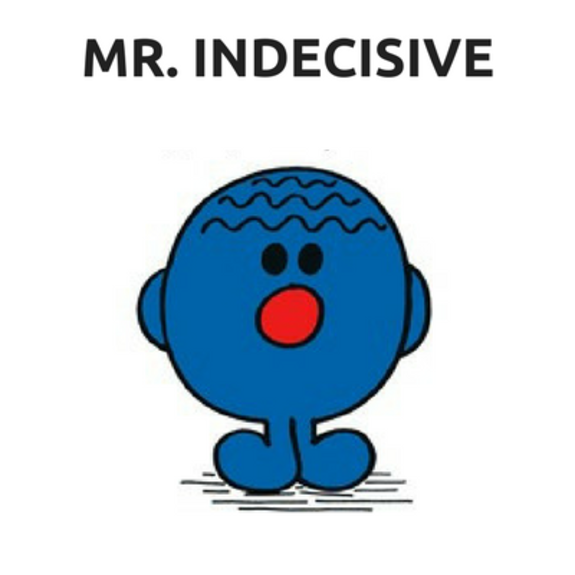
Mr. Indecisive can’t decide what he wants, when he wants it, or sometimes, whether he even wants it. Many times when he does decide then he changes his mind and the relationship suffers when you ask for a change request to pay for the change and additional time.
You’ll hear things like:
“I’m not sure if we want a blog…”
“I can’t confirm with corporate if we have the bandwidth for a social campaign right now…”
“Maybe we should do email marketing. But do we really want email marketing?”
That’s not the worst part of it - Mr. Indecisive will often take it upon himself to create emergencies. He approves things without really considering and then when you have passed the point of no return it becomes an emergency and everyone must drop everything. is It’s not that he enjoys tormenting you - he just indecisive and often disorganized.
If you don’t want to feel like a babysitter then avoid this client unless.
How to fix this relationship
Resign yourself to the fact that you will have to share the burden of decision-making when you’re dealing with Mr. Indecisive.
But beyond that, the reason for this client’s indecisiveness is often due to a lack of knowledge or organizational skills. If you are to salvage this relationship, you will have to devote some time to educating the client about your work.
Try these:
- Include educational resources in the implementation process: Once you get the client onboard, direct them to some educational resources (on your site or elsewhere). Focus on the basic stuff. You don’t want to overwhelm them; just give them enough information to make decisions.
- Share case studies: Help clients decide by sharing case studies with them. For instance, if a client says that they’re not sure about getting a blog, tell them how another client saw a 125% increase in site traffic after setting up a blog.
- Agree to the process before starting: Your initial agreement should outline your process clearly. Include specific deadlines for approval as a prerequisite for meeting project timelines. The client should know how you work, and how holding up decision-making delays the project.
Client #5: Miss Perfect
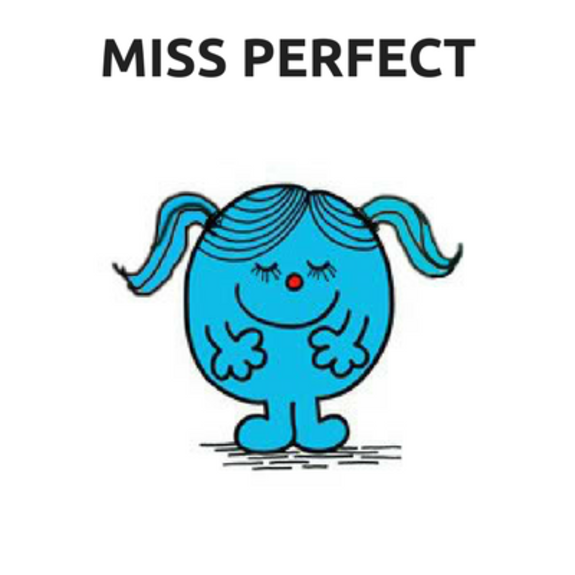
Miss Perfect is a designer, a copywriter, a full-stack programmer, a CRO specialist and a social media manager all rolled into one. SHE KNOWS EVERYTHING!
She has her own ideas about how things should be and will make sure that you work weekends to meet her exacting standards. Even worse, she has 100% conviction in her own ideas, even when she has failed in the past or they come from dubiously sourced blog posts.
Be prepared to hear things like:
“Shouldn’t we change the button to red? I read a blog post that red buttons convert better”
“Surely that isn’t aligned properly - I can see at least 1 pixel variation.”
“We should send this tweet at 8:41 am. That’s when most people are online. I read it somewhere.”
This reincarnation of Steve Jobs will make your working life miserable. She will second guess all your decisions and offer her expertise at every turn.
Is she worth the trouble at?
How to fix this relationship
Behind Miss Perfect’s know-it-all persona is a deep-seated distrust of agencies. Maybe she has been ripped off by one in the past, or maybe she is just uncomfortable with delegating work.
Whatever the reason, here are a few ways you can save this relationship:
- Identify the cause of distrust: Every client has a trigger for trust issues. If you can identify the cause of distrust, you can remedy it as well. For example, if a client has been ripped off by an agency in the past, you can win their trust by regularly sharing your work while it is being developed.
- Make her part of the team: Miss Perfect likes to do things herself, so it sometimes pays to look at her as a ‘remote’ member of the team. An occasional WWYDH (What Would You Do Here) will pump up her tyres and give her the ownership to shoot you down in flames.
- Include terms for revisions in SoW: The perfectionist client is marked by unreasonable revision requests. Protect yourself by including clear terms for revisions in your Scope of Work document. Throughout the project identify the current revision when you provide it and how much more there are to go.
- Communicate OUR results: To win over Miss Perfect, you have to first make her comfortable with delegating work. Show her the results of any work WE do (particularly work that didn’t require the client’s input) so that they can gradually start trusting your judgment.
Client #6: Mr. Entitled
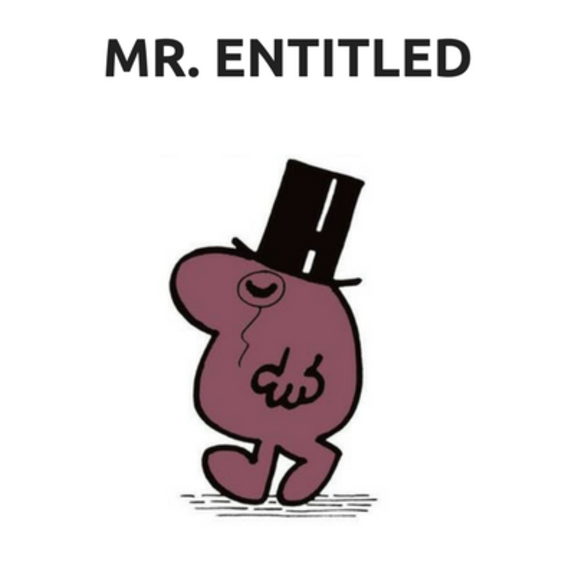
This client feels that he is somehow entitled to your time - even the time he isn’t paying for. He makes demands because he has an over inflated opinion of his importance to your business. Perhaps he represents a large brand or he was amongst your first clients or he’s related by blood in some way.
You might feel obliged to give them extra attention, but they usually end up making demands that make SEO spammers look reasonable. Be prepared to hear things like:
“Can you get my brand new site on the first page for “car insurance” in a week?”
“I saw Buzzfeed get 100,000 likes on its last share. Can we get something similar in our $500/m social media budget?”
It’s all a bit sad, really, but if they can’t understand that you have a business to run, you’ll have to show this client the door.
How to fix this relationship
Mr. Entitled doesn’t act the way he does because he enjoys it; he has just never been told NOT to act that way.
But while clear communication will help, there are a few other steps you can take as well to mitigate problems:
- Renegotiate contract for new projects: For older clients, renegotiating your contract and Scope of Work is often the only way to get them on par with your newer clients. You might have to throw in something extra to take mitigate the sticker shock.
- Reaffirm contract terms: Anytime you see an unreasonable request in your inbox, finish the request, then remind the client of your terms. You want clients to know when they are stepping beyond the terms of the deal.
- Maintain open communication: I can’t emphasize this enough: honest and open dialog is the only proven way to deal with clients with unreasonable demands in the long-term.
Client #7: Mr. Unreasonable
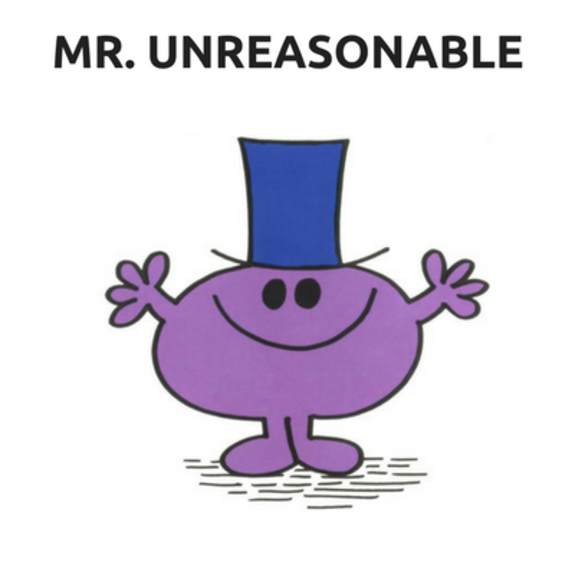
Mr. Unreasonable will make you wish you’d never joined the agency business in the first place!
He will scrutinize every item in your invoices, won’t release due payments, and will make sure that you know exactly how unhappy he is about your work and your prices.
You’ll hear gems like:
“Why are you charging for copywriting? Any moron with a pen can write!”
“Your last campaign got us an ROI of 500%, but it really wasn’t up to my standards”
“A friend of a friend I know got this done for $5 on Fiverr.com. Why am I paying you so much for a new logo?”
For every dollar you make off him, Mr. Unreasonable will cost you another dollar in morale and peace of mind. The Rolling Stones (I can’t get no) Satisfaction is the theme song to Mr. Unreasonable’s life!
Drop him as soon as you can.
How to fix this relationship
You might not be able to fix his sour mood and negativity, but you can fix most other issues with this client. Start by:
- State & stick to your terms & timelines: If you expect invoices to be paid within X days, state so in your first contract. Same with your deliverables - don’t let the client second guess project timelines & don’t accept any nonsense.
- Abandon cost-plus pricing: Not really related to a single client, but in the long-term, abandon cost-plus pricing. This makes you open to cost comparisons with other agencies - a source of a lot of Mr. Unreasonable’s complaints.
- Lay out the Scope of Work clearly: Document everything from deliverables to goal measurement before you start working. The client and you should be on the same page from the start.
Client #8: Mrs. Bossy
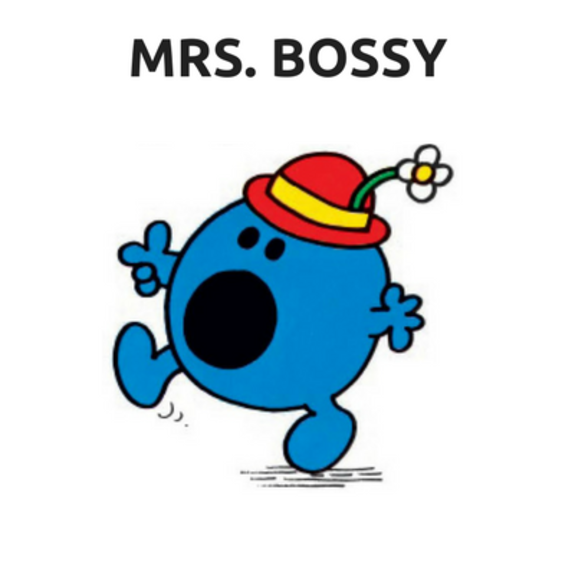
Think of the worst boss you’ve ever had. Now amplify that by 10x and you’ll get Mrs. Bossy.
Mrs. Bossy doesn’t want an agency; she wants her own army of henchmen willing to do her bidding without a question or doubt. She won’t issue requests; she will dictate orders, and if you want to avoid her wrath, you better follow them to a T.
While you’re not one to bristle at the lack of “thanks” and “please” in the client’s emails, you joined the agency business to avoid terrible bosses in the first place. Every time Mrs. Bossy sends in an order, you’ll feel that joy of running an agency chip away slightly.
Do the best thing for your agency’s morale: fire Mrs. Bossy right away.
How to fix this relationship
Your relationship with Mrs. Bossy is salvageable if you follow the right processes. It might not be pleasant, but it can be profitable. Try these:
- Resist the urge to be super responsive: Don’t respond immediately or at 3 am to emails early on (and make sure the client knows why) lest it becomes a habit. This sort of responsiveness will ‘feed the beast’ so to speak and you will soon find yourself defending why you have not achieved an unreasonable expectation.
- Follow a strong implementation process: Make it clear to the client what is expected of them and what you are going to do in return when you first onboard them.
- Develop a thorough Scope of Work: Make sure to define what you consider “reasonable” requests. The client should know that a one-off request at 6 PM on a weekend is fine, but a weekly order at 12 AM is not.
Client #9: Master Manipulator
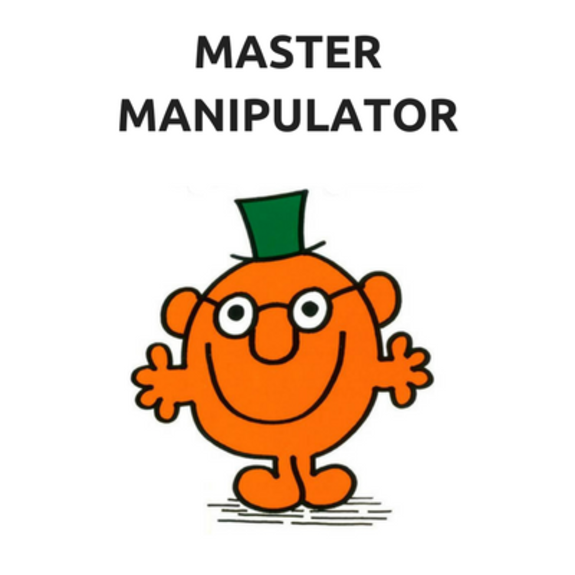
Master Manipulator thrives on withholding information and playing teams and agencies against each other. He firmly believes that fear is the greatest motivator and will use it to develop a culture of dread and mistrust.
Think of Frank Underwood with a lot less charm and a lot more self-importance. While he won’t break the fourth wall, Master Manipulator will often say things like:
“Agency X working with our branding says that they can do this for only Y”
“This would be great if one of your team members wasn’t pulling you down”
“I love it! You should be working in our marketing team instead”
Working with The Manipulator is a great way to get your attrition rate up and morale down.
How to fix this relationship
Mr. Manipulator isn’t evil; he just wants to make himself look good. All his complaints about costs and comparisons with other agencies are just a way to save his company some money.
You can save this relationship by:
- Establishing communication protocols early in the relationship: The client, as well as your team, should know who is the point of the contact in the relationship. The client should have no reason to contact any member of your team privately.
- Giving clients a mechanism for private employee feedback: Set up a feedback mechanism (such as an NPS survey) so that clients can tell you what they think of different team members. This is far better than the client publicly scolding/applauding a particular team member.
- Appraise employee performance regularly: Gather feedback from clients and appraise each team member once a project is finished. If an employee is performing poorly with a particular client type (say, a designer who struggles with mobile-only clients), remove him from similar projects in the future.
- Sell your work on ROI and quality: Again, this should be a long-term goal - abandon cost-plus pricing. This will remove a lot of complaints and comparisons with other agencies about pricing.
Client #10: Miss Blemished

Miss Blemished has been fired once for one or several of the faults already outlined above. Yet, she comes back with a promise to clean up her act and the carrot of a new contract. You might even feel bad for her because you know she has already been fired by other agencies.
Most of Miss Blemished’s early emails with start off with one of these words:
“I’m sorry…”
“You are my last hope…”
“I really really need help…”
Unfortunately, pity is not a business decision. She might come back, but she is going to bring all her old blemishes with her. Unless you want to go through the drama of firing her all over again, avoid Miss Blemished at all costs.
How to fix this relationship
Since Miss Blemished is a known quantity to you, you are already familiar with her problems. This makes you better equipped to resolve issues when they arise.
Try these:
- Develop a proper Scope of Work: You should have airtight clauses for delivery, availability and payments before you renew this relationship. Keep your past in mind when framing these terms.
- Include an “out” in the contract: There should be a clause to terminate the contract if there is a repeat of past issues. Say, if you fired the client the last time because of untimely payments, you should have a way to cancel the contract in case of non-payment past X days.
- Identify issues early and bring them to the client’s attention: This client came back to you because she needs your help. If she does the same things that got her fired the last time, let her know - she will likely be amiable to remedying them.
What to do before firing a client
You’ve thought long and hard and you’ve finally decided that the relationship with the client isn’t working out & that it’s time to move on.
Great. But before you pull the trigger, there are a few things you should do:
Pre-firing checklist #1: Check your ego
Before you give your client marching orders ask yourself:
Are you doing it because the client has hurt your ego?
Ego is a disastrous thing to have in the agency business. Your client might not be your boss and you aren’t beholden to treat them like one, but they still pay the bill and retain the right to make final decisions.
Ego clashes are particularly common in creative businesses where disagreements are natural. If a disagreement or criticism leads to a bruised ego, it’s not enough of a reason to end the relationship.
Remember that the average tenure of a marketing manager is 44 months. Consider migrating the client to another account manager or team that might be able to gel better with the client.
Pre-firing checklist#2: Is it “ethical” to fire the client at this time?
The ethics of terminating a client-agency relationship can be rather murky.
Perhaps you’re dealing with a small business that absolutely needs you before a new product launch. Or you’re working with a startup that’s been under pressure from investors & to terminate now would all but end their business.
While you might have the legal right to end the relationship, it might not be ethically okay to do so. This won’t hurt you financially - at least in the immediate term - but it can earn you a reputation. It’s bad karma, the world is a small place & it can have unforeseen outcomes.
If possible, pull yourself out of the ethical gray zone by giving the client enough time to find an alternative & delivering on your commitments.
Pre-firing checklist #3: Check that you’re not in breach of your contract
This one is obvious enough - make sure that you’re:
- Not breaching the contract by firing the client;
- That you're fully aware of any penalties for doing so &
- That you know the repercussions with respect to the ownership of any copyright for anything that you have produced.
If you have to serve a notice period, do so, even if working with the client is unbearable. While most clients won’t come after you legally, it’s always a good idea to cover all your bases.
Pre-firing checklist #4: Verify that you don’t owe them any work
Nothing will earn you a reputation faster in the industry than walking away without finishing your work. If you owe the client some work, make sure that you wrap it up before the firing. Not doing so will give the client room and reason to talk about you to others. And if word spreads, you might just find referrals drying up.
Pre-firing checklist #5: Try a relationship reset to establish a new baseline.
Before you take the drastic step of ending the relationship, try doing a complete reset.
You reset your goals, re-establish your processes and timelines, perhaps reset the team working with the client and renew your commitments. Start a dialog to find a baseline and use it to measure your effectiveness.
Think of this as a way to start things afresh without the burden of past disagreements and miscommunications. You’ll often find that adopting a fresh outlook on old relationships can infuse them with the vitality and commitment needed for success.
Pre-firing checklist #6: End the relationship only if it is beyond redemption
Firing the client should always be your last resort. Pursue it only if you know that the relationship is absolutely beyond redemption and if it is hurting your other clients.
Your aim should always be to end the relationship as amicably as possible. When that’s not an option, the best you can hope is to end on a gracious note.
Sometimes an open conversation with the client about the difficulties that you’re encountering and suggesting whether your agency might not be the best ‘fit’ for the client is the best stimuli to get things back on track.
Once you adopt this stance, you’ll find that a lot of seemingly unsolvable problems are actually easy to fix. From unclear expectations to improper scoping of work, a lot of issues can be solved by simply having a clear dialog with the client.
If you still find that the relationship is beyond salvage, go ahead and commence the firing.
How to fire your client
Get them to make the decision
If after all the above, you’re still sure that you want to end the relationship, this section will help.
Firing a client is not an exact science - it’s not something agencies to do often (thankfully) so there aren’t a lot of well-documented resources for doing it. Managed the right way, a client termination can result in a level of respect that generates a healthy dose of good karma and might even lead to referrals.
Ending a relationship is also a lot more personal than acquiring a new client. You know a lot more about the client than you did when you first started the relationship, which can make the firing hard. As much as I wish I could, there is no one-size-fits-all when it comes to ending client relationships - it’s much like terminating an employee!
You’ll want a different “exit strategy” for every client.
A new client you signed-up barely a week ago can be let go over a quick email, but an older client deserves the courtesy of a face to face meeting, video conference or call. Try to follow the four P’s when firing a client:
- Prepare: Prepare the client for the subject of the meeting to let them know that you want to discuss the future of the relationship.
- Personal: Do everything you can to meet the client face to face, sending an email is just a terrible way to end a relationship - it’s as bad as ‘breaking up’ by text!
- Private: Goes without saying - keep the end of the relationship private and confidential. No need to announce it on Twitter for everyone to see.
- Polite: Tempers flare and things can get tense when you end a relationship. Don't be a jerk under any circumstances. No matter how bad things get, always be polite and courteous. Don’t point fingers or get into a he said, she said.
Conclusion
Ending a client relationship often seems like the only solution, however, as we have explained there are many potential ways to reset or rebuild a shaky client relationship. Why agency-client relationships go bad is easy enough to figure out: unclear goals, unmet expectations, and poor communication. Often, these problems are solvable. Try that before you attempt more radical solutions (such as ending the relationship).
But if it is something you’ll have to do then it’s better to fire them than waste time dealing that could be spent on more rewarding relationships.
When you’re ready to fire the client, it’s similar to letting an employee go - the best outcome from this meeting is that through the course of the discussion the client realizes that the relationship is not working and that THEY suggest it might be best for both parties to move on.
Follow these tips and you can’t go wrong.













